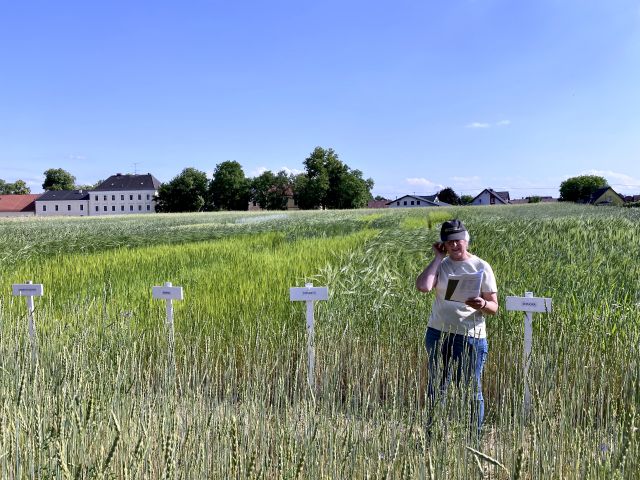In addition, results from recent years were presented that are particularly important for the surrounding Alpine foothills. The first step was to visit the show garden that was set up this year with the facilities to promote local biodiversity. Particular emphasis was placed on all cultures for direct food use, which are currently being treated as part of the “BioFieldFood” project. These are lentils mixed with different types of grain, oil linseed and camelina in different seed strengths. Furthermore, numerous varieties and breeding strains of dry beans and chickpeas were presented and aroused the curiosity of the visitors. The information about the local cultures was additionally enriched by DI Andrea Winterling as a representative of the cooperation partner LfL from Bavaria. The cultivation and variety trial of the sweet potato was also excitingly followed, and interesting findings from the last few seasons were already brought to light. The extensive variety and mulching trial for potatoes as well as the current value testing of many different types of spelled were also presented. Rye rounded off the list of grains. Among the large-grain legumes, the variety of broad beans and peas was presented, which was rounded off by the still very unusual and unknown vegetable broad beans and broad beans. All crops were in excellent condition despite the mostly very adverse growing conditions this year.






